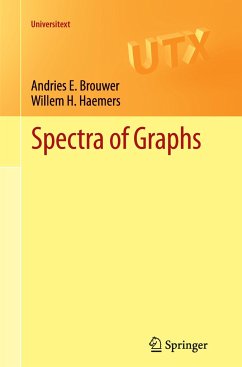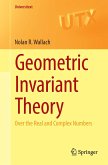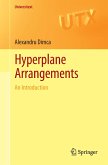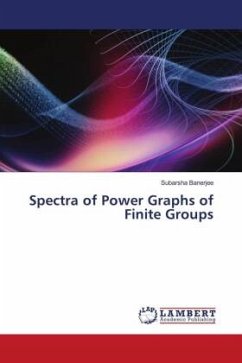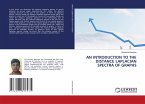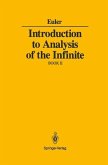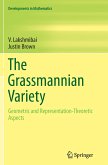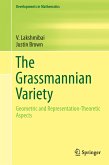This book gives an elementary treatment of the basic material about graph spectra, both for ordinary, and Laplace and Seidel spectra. The text progresses systematically, by covering standard topics before presenting some new material on trees, strongly regular graphs, two-graphs, association schemes, p-ranks of configurations and similar topics. Exercises at the end of each chapter provide practice and vary from easy yet interesting applications of the treated theory, to little excursions into related topics. Tables, references at the end of the book, an author and subject index enrich the text.
Spectra of Graphs is written for researchers, teachers and graduate students interested in graph spectra. The reader is assumed to be familiar with basic linear algebra and eigenvalues, although some more advanced topics in linear algebra, like the Perron-Frobenius theorem and eigenvalue interlacing are included.
Spectra of Graphs is written for researchers, teachers and graduate students interested in graph spectra. The reader is assumed to be familiar with basic linear algebra and eigenvalues, although some more advanced topics in linear algebra, like the Perron-Frobenius theorem and eigenvalue interlacing are included.
From the reviews:
"Algebraic graph theory seeks logical relations between the graph structure and spectrum structure. Viewing graphs as matrices makes graph spectra a rich, nuanced branch of linear algebra, the central undergraduate subject. ... the present volume offers the more thorough literature survey. Summing Up: Recommended. Upper-division undergraduates and above." (D. V. Feldman, Choice, Vol. 49 (11), August, 2012)
"This book contains an extensive overview of current topics and recent developments in algebraic graph theory, and has a survey-like appearance. It is aimed primarily at researchers and graduate-level students, as it is based on lecture notes for the course that the authors gave at the Institute for Studies in Theoretical Physics and Mathematics in Tehran in 2006." (Dragan Stevanovic, Zentralblatt MATH, Vol. 1231, 2012)
"The theory of graph spectra has been getting increasing attention over the last several years. ... This text ... moves the study further along and provides an outstanding reference for graduate students and researchers interested in the many applications of these eigenvalues and their associated eigenvectors. ... the authors are well-versed in the literature, providing 358 references and frequently noting where their definitions might differ slightly from those of some previous researchers. ... the text serves more as a graduate-level monograph ... ." (John T. Saccoman, The Mathematical Association of America, May, 2012)
"Algebraic graph theory seeks logical relations between the graph structure and spectrum structure. Viewing graphs as matrices makes graph spectra a rich, nuanced branch of linear algebra, the central undergraduate subject. ... the present volume offers the more thorough literature survey. Summing Up: Recommended. Upper-division undergraduates and above." (D. V. Feldman, Choice, Vol. 49 (11), August, 2012)
"This book contains an extensive overview of current topics and recent developments in algebraic graph theory, and has a survey-like appearance. It is aimed primarily at researchers and graduate-level students, as it is based on lecture notes for the course that the authors gave at the Institute for Studies in Theoretical Physics and Mathematics in Tehran in 2006." (Dragan Stevanovic, Zentralblatt MATH, Vol. 1231, 2012)
"The theory of graph spectra has been getting increasing attention over the last several years. ... This text ... moves the study further along and provides an outstanding reference for graduate students and researchers interested in the many applications of these eigenvalues and their associated eigenvectors. ... the authors are well-versed in the literature, providing 358 references and frequently noting where their definitions might differ slightly from those of some previous researchers. ... the text serves more as a graduate-level monograph ... ." (John T. Saccoman, The Mathematical Association of America, May, 2012)

